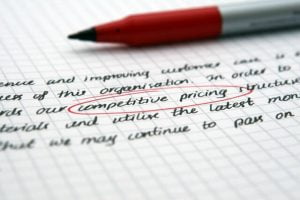 What is yield management?
What is yield management?
Learning about this is not exactly hospitality 101. But understanding this tool to be able to effectively include it in your arsenal for achieving revenue goals makes this article so important.
Read on to learn not only what yield management is, but a few strategies to implement today. We’ll even give a few tips on how to make your yield management strategy even more effective over time.
Or skip the reading and get some help deciding how to implement a yield management strategy for your business!
But first, a personal story:
Back when I was an innkeeper at a Connecticut bed and breakfast (before joining the Q4Launch team) I learned the value of utilizing yield management.
Unfortunately, I learned this lesson the hard way.
A golf tournament came to town, and very quickly every room, vacation rental, and rentable space was occupied for this famous event.
We booked-out the house far in advance of the actual event, and considered ourselves lucky.
But when the event actually happened, we couldn’t help but kick ourselves. The “guests” who booked our rooms at our normal rates turned around and re-sold our rooms for up to 4 times the price we did! At the time, we didn’t use yield management, or change our rates at all through the course of the year. And we certainly wished we did afterwards.
It was insanely frustrating, and years later I still kick myself for not having heard of or implemented yield management sooner.
Today, the Stanton House Inn uses yield management as part of their standard revenue strategy.
And so should you.
Without effective use of yield management strategies, you miss out on the opportunity to:
- get more bookings (or at least higher-value bookings)
- offer competitive rates and promotions
- forecast the upcoming booking season
Yes, yield management can help you do all of that.
How? Keep reading.
What is Yield Management?
Before you can understand the concept of managing it, you need to know what yield is. Yield is income minus expenses, also called the “Profit Margin”.
With hotels, bed and breakfasts, or vacation rentals, any rooms or units left unsold each night are lost revenue. Yield management is about making sure that those rooms are filled in the most profitable way possible. Which this then brings us to the yield management pricing definition. In simple terms, it is a strategy for varying your price to generate maximum profits. Just like buying a seat on an airplane, two people may pay different prices based on when they make their purchase. If you book last minute, you may end up paying several times more than the person next to you. Just like the airlines, in the hospitality industry yield management is used to maximize profits by providing a product or service to the right customer, at the right time, and at the right price.
That basically means changing your prices to match fluctuations in supply and demand.
You’re probably already doing it.
Some common uses include changes in rates based on things like:
- Seasonal (like high season versus low season rates)
- Changes to rates based on the day of the week
Who Uses Yield Management?
Yield management strategies can be applied to virtually any type of business that:
- Has a fixed number of products to sell at any given time
- The product’s value is time-constrained, meaning that after a certain date or amount of time, the product loses value
- Different customers are willing to pay different prices for the same product or number of products
Some common industries you’ve likely been exposed to other businesses’ yield management strategies include:
- Hotel rooms
- Airline or bus seats
- Rental cars
- Sporting, event and music venues
- Restaurants (think special seating for events)
Basically, everyone in hospitality!
An Introduction to Supply & Demand
The concept of supply and demand is Economics 101. As such, it’s boring to explain, and to understand. So we found a video by Resnexus to explain it!
In any market for any product, there is a price at which the public is willing to pay, and producers are willing to produce it for. Yield management helps businesses find that ideal price in a more flexible manner than deciding yearly price adjustments.
But supply and demand are the most important elements of yield management, so it’s important to understand this concept.
Alright, So, How Do the Laws of Supply and Demand Apply to Your Business?
Now that we’re done listening to Economics theories, let’s move on the practical matter: how do you use all of this?
Supply = Number of Rooms of Units You Have
For most of us, this rarely changes, so we’ll assume supply is fixed throughout the year. It also includes the number of units in your competitive set.
Demand = Number of People Who Want to Book a Specific Unit for a Specific Period of Time
This number fluctuates greatly throughout the year. It can change daily, even hourly!
Due to this known fluctuation, many of us already use seasonal or weekend rates.
That is yield management at its most basic level.
Where Supply & Demand Meet, You’ll Find the Perfect Price
 So, what is the perfect price? Well, it depends. I can tell you what it’s not, however.
So, what is the perfect price? Well, it depends. I can tell you what it’s not, however.
It is not how much you “feel” like your room is worth. Your perception of value is irrelevant.
There, I said it.
Using yield management permits supply and demand (ie: the data, for making data-driven decisions!) to determine what your room is worth.
The law of supply and demand, or the “invisible hand” of the market, is an attempt to simplify the conceptual challenge of millions of little decisions being made at any time.
For example, you may value your unit at $100 per night, but your next neighbor doesn’t value it at all. After all, they live next door, why would they pay for that?
But there may be a visitor to your town who doesn’t care where they’re sleeping, they just need somewhere to sleep. When there’s no room at the inn, they may be willing to pay twice that price.
Save yourself the trouble of interviewing everyone what value they perceive your room or unit to be, and just let the system work itself out.
Your guests are already used to price changes (also known as yield management) for everything else they buy.
What’s the Yield Management Formula?
That’s the most straightforward question on this list!
The objective of all yield management strategies for your lodging establishment is not to simply increase rates, or only to increase the rate of occupancy. The goal is to maximize the average revenue per available room, per night.
Anyway, the formula is: Revenue per available room / unit (in hotel parlance, RevPAR) = average room rate * occupancy rate.
6 Common Yield Management Strategies You Can Start Using Today
As I mentioned before, the most common pricing strategies in the hospitality industry are neatly divided into two categories: based on rate, and seasonal rate strategies.
Rate strategies
This is when you have different rates depending on various factors that affect demand for the room or unit. Examples include but are not limited to:
- Room type (suite versus standard room, ocean view versus pool view)
- Bedding type (queen bed versus king bed versus twin bed versus extra bed)
- How many guests are booking (minimum number of guests per room, or offering a lower rate for large numbers of rooms per booking)
- Packages (for a particular function, for example)
Seasonal Strategies
This is when you have different rates based on popular and unpopular times:
- High versus low season rates
- Day of week rates
But Wait, How Do I Actually Implement These Strategies?

Oh, right.
Until the miracle of the computer, the solution was pen and paper. And lots of it.
It was painful.
But you don’t have to do that!
Luckily, yield management in the front office is more setting rules in the algorithm of your property management software. Then sitting back and watching the money roll-in.
In the Bed and Breakfast and Hotel industry, some well-known software companies with this tool included are:
It’s easy to implement these rules in the Vacation Rental Industry:
Get free advice from our experts on how to implement an effective yield management strategy specific to your business!
How to Increase Demand for Yield Management
Now that you’ve got your yield management strategy in place, how to keep increasing demand, and therefore continue to increase your price point?
Quality, Perception of Value, and How to Use It to Push Demand Up

First, quality of your property, service, or amenities is important to factor into your pricing. The quality of your product is one of the factors that drives demand.
A study in 2016 by Microsoft and Boston University found that when hotels or restaurants add a star to their quality rating, sales increase up to 26%.
Higher quality generally translates to a higher perception of value, leading someone to typically elect to be willing to pay more (at a basic level). That means increased demand.
See the importance of hospitality review ( and reputation) management?
Great Marketing Increases Demand
Oh, right. We’re a hospitality marketing company.
Great hospitality marketing will increase the demand for your product by exposing it to more potential buyers. By having broader exposure to more people, you increase demand, thereby creating opportunities to raise the price.
Are you already investing in increased marketing? Then this is likely a great year to incorporate yield management into your revenue management system.
Want to ask about any aspect of your hospitality business strategy? Contact us to schedule 30-minutes to plan your yield management strategy, or some other aspect of your business’s revenue management game plan!
Colin Pearson | Director of Marketing Services
Learn More About Me and Q4Launch on LinkedIn today!
Matt Bare | Founder
